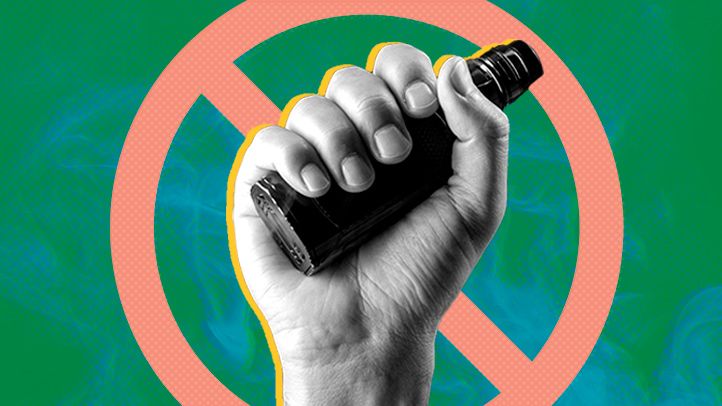Breaking through the addiction
December 17, 2022
Vaping has become more and more of a common activity for young teens throughout the past couple of years. Teens often say “I’m just going to try it once” when vaping for the first time. From that one trial, vaping often becomes a once-in-a-while activity, a when I’m stressed activity, a once-a-week activity, and eventually becomes an everyday activity. Many people build a strong dependence on e-cigarettes at a young age, which is troublesome considering it gets harder to quit the older and more addicted people get to vaping. The more time that goes by, the more strenuous people’s quitting experience becomes, which is why everyone should start by making a plan.
First things first, let’s answer the question: am I addicted to e-cigarettes? Vapers often have trouble realizing and accepting that they’re addicted to nicotine. Once they have a clear idea of how much nicotine is entering their bodies daily, e-cigarette users should come up with a reason to stop vaping. Some people choose to stop vaping to protect their lungs, stop wasting their money on these products, prevent losing friendships/family bonds, etc. Next, people should identify their triggers such as specific groups of people who vape, stores that sell vape products, etc. Finally, people should prepare for success by taking themselves out of situations that might cause them to relapse into old habits.
E-cigarette users who are attempting to quit vaping often carry materials on them at all times to help with nicotine cravings. Some common strategies are chewing gum, eating lollipops or other hard candies, and chewing on soft materials such as straws. It’s important for people to find new ways to occupy themselves when they feel the need to vape.
Other ways to keep busy while quitting vaping are taking walks, listening to music, drinking water, meditating, exercising, and talking/spending time with people who don’t vape.
“Over time, your brain and body get used to having nicotine, which means you may have nicotine withdrawal symptoms when you quit vaping,” teen.smokefree.gov says. Some withdrawal symptoms might include headaches, anxiety, fatigue, hunger, trouble sleeping, feeling jittery, etc. Vapers can control these symptoms by staying hydrated, attempting to get lots of sleep, staying prepared for when cravings arise, and having something handy like gum or straws to chew on when they feel the need to vape.
Another resource to help e-cigarette users stop vaping is downloading an addiction tracker app. These apps track how long you’ve been ‘vape free’ and often provide resources/helpful techniques to cope with withdrawal symptoms. Some popular addiction tracker apps include “Quit Vaping,” “I Am Sober,” and “Smoke Free – Quit Smoking Now.”
Attempting to get over an addiction to nicotine is a tough challenge that will take time to accomplish. It’s important to recognize that some days are going to go smoother than others, and talking to a parent, friend, or doctor is always a good option to help assist in this process.
